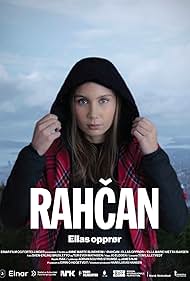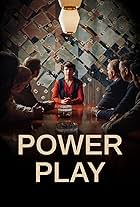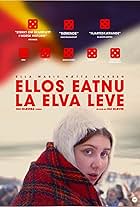Sami artist Ella Marie is torn between city life in Oslo and her roots in Finnmark. She decides to leave the city to save Repparfjord.Sami artist Ella Marie is torn between city life in Oslo and her roots in Finnmark. She decides to leave the city to save Repparfjord.Sami artist Ella Marie is torn between city life in Oslo and her roots in Finnmark. She decides to leave the city to save Repparfjord.
- Director
- Writer
- Star
- Awards
- 2 nominations total
- Director
- Writer
- All cast & crew
- Production, box office & more at IMDbPro
Storyline
Featured review
Ella Marie puts on her coat in the tent and points to her belt with the fish symbol: Let's go.
Flashback: Her home is with the Sámi people in Finnmark, Norway's northernmost province. In Oslo, Ella has made a new life for herself, singing with the band ISÁK, who consider themselves part of the electrojoik (that's a thing?).
A mining company wants to mine minerals in Finnmark, which brings Ella and a group from environmental protection to protest. They fear long-term consequences for the ecosystem on the land of the Sámi, some of whom still traditionally keep reindeer there. The group camps in the north and chains themselves to excavators to prevent the mining. Ella Marie performs a song - Rahcan, which means "storm".
Anne Marte Blindheim accompanies Ella Marie over several years, during which she became a kind of symbolic figure of protest in the Norwegian media after taking part in a number of singing competitions. In between, Ella also visits Mari Boine, a Sami singer and strong symbolic figure, if not the icon within the "Sámi scene".
The insight into Ella Marie's life and the protest actions are worth seeing for anyone interested in the topic, but in between it seems a bit unstructured. It is clear that it is not always possible to start from scratch, but perhaps more context would have been helpful in the film.
Also, the CEO of the company is given space to make his point. Something that is always good from a cinematic point of view to avoid being accused of being one-sided. However, it doesn't really contribute to further insights, as only chumming marketing slogans are dropped. Ella Marie also notices the problematic "giving space" at an event in the film.
Also interesting are the shots from the 80s, when numerous Sámi and sympathizers protested in the streets of Oslo for their rights.
In the cinema, Anne Marte Blindheim tells of her initial contact with Ella Marie, whose protest she learned about in a newspaper article. The protest has been successful so far, as the company lost their (German) investor, who didn't like things to move quickly and quietly enough. However, they continue to look for ways to implement their project.
Flashback: Her home is with the Sámi people in Finnmark, Norway's northernmost province. In Oslo, Ella has made a new life for herself, singing with the band ISÁK, who consider themselves part of the electrojoik (that's a thing?).
A mining company wants to mine minerals in Finnmark, which brings Ella and a group from environmental protection to protest. They fear long-term consequences for the ecosystem on the land of the Sámi, some of whom still traditionally keep reindeer there. The group camps in the north and chains themselves to excavators to prevent the mining. Ella Marie performs a song - Rahcan, which means "storm".
Anne Marte Blindheim accompanies Ella Marie over several years, during which she became a kind of symbolic figure of protest in the Norwegian media after taking part in a number of singing competitions. In between, Ella also visits Mari Boine, a Sami singer and strong symbolic figure, if not the icon within the "Sámi scene".
The insight into Ella Marie's life and the protest actions are worth seeing for anyone interested in the topic, but in between it seems a bit unstructured. It is clear that it is not always possible to start from scratch, but perhaps more context would have been helpful in the film.
Also, the CEO of the company is given space to make his point. Something that is always good from a cinematic point of view to avoid being accused of being one-sided. However, it doesn't really contribute to further insights, as only chumming marketing slogans are dropped. Ella Marie also notices the problematic "giving space" at an event in the film.
Also interesting are the shots from the 80s, when numerous Sámi and sympathizers protested in the streets of Oslo for their rights.
In the cinema, Anne Marte Blindheim tells of her initial contact with Ella Marie, whose protest she learned about in a newspaper article. The protest has been successful so far, as the company lost their (German) investor, who didn't like things to move quickly and quietly enough. However, they continue to look for ways to implement their project.
- stefanmagalowski
- Oct 20, 2023
- Permalink
Details
- Release date
- Country of origin
- Official site
- Languages
- Also known as
- Rahcan - Ella's Riot
- Production companies
- See more company credits at IMDbPro
- Runtime1 hour 15 minutes
- Color
Contribute to this page
Suggest an edit or add missing content

Top Gap
By what name was Rahcan - Ellas opprør (2022) officially released in Canada in English?
Answer

